Scuba Diving in Jamaica: Everything You Need To Know Before You Go
Diving enthusiasts, looking to explore amazing sites that are not overrun with crowds, will find heaven on earth in Jamaica. Though dive vacations aren’t the main things the island is known for (think Reggae, its beautiful beaches, majestic waterfalls…), Jamaica has been growing in popularity as a scuba diving destination over the years. For the most part though, the island is a scuba gem that remains relatively off the map, which means more room for you to explore the ocean depths uninterrupted.
You’ll find the best dive sites across Jamaica in Negril, Ocho Rios and Montego Bay. Two of the most popular are The Arches and The Caves, which feature remarkable rock structures – you can often even see rays and sharks. Beginners will love sites like Surprise Reef, where tropical fish and turtles glide through crystal clear waters!
In this article on the Beaches Blog:
What is it like to scuba dive in Jamaica?
14 popular dive sites in Jamaica
When to go Scuba diving in Jamaica
Dive for free with Beaches / Sandals
Now that you know more about scuba diving in Jamaica
Bonus: Alternatives to Scuba diving
What is it like to scuba dive in Jamaica?
In Jamaica, there are many scuba diving spots to choose from. This means divers of all levels can find an optimal area which lessens the pressure to dive in a place that doesn’t match your skill level. Resorts like Sandals Resorts and Beaches Resorts in Jamaica include diving in their all-inclusive packages – guests can scuba dive (two tanks a day) and go on snorkeling trips for free during their stay. This also includes all essential equipment. Free diving during your trip makes these resorts a good option for all travelers who want a vacation centered around diving.
Choosing a dive site in Jamaica is a process of determining what you’d like to see. There are over 100 active dive sites in Jamaica, and interest should match skill level to find the right one. To decide, ask yourself things like whether you’d be satisfied with seeing just tropical fishes, turtles and colorful coral of all types, or if you want to seek out rays and maybe even nurse sharks. Whatever the answer, there’s a dive site for you in Jamaica.
The Jamaica coastline is saturated with coral reefs. Negril, Montego Bay and Ocho Rios have marine parks and reserves which serve to protect the environment and marine life, which divers’ benefit from. Many of the protected areas were designated such in order to put a stop to destructive fishing habits. Since the 1990s when this sort of protection was implemented, the health of the reefs has greatly improved.
The Cayman Trench which is near the island’s north coast is worthy of mention – this is a top attraction for divers looking for exceptional wall dives and exciting encounters in the open sea. The north coast of Jamaica (where Ocho Rios and Montego Bay are located) is best for these kinds of dives.
What you can see when diving in Jamaica
Sponges, soft gorgonians, black coral, sea fans… and that’s not even touching the over 260 types of reef fish you’re likely to come across while scuba diving in Jamaica. Some of the rarities you may encounter include the four-eye butterflyfish and sharpnose puffer. You’ll also see parrot fish, sea slugs, green and spotted moray eels, mackerel, turtles, crabs, barracuda, eagle rays, and more – not forgetting of course, the various hard and soft corals.
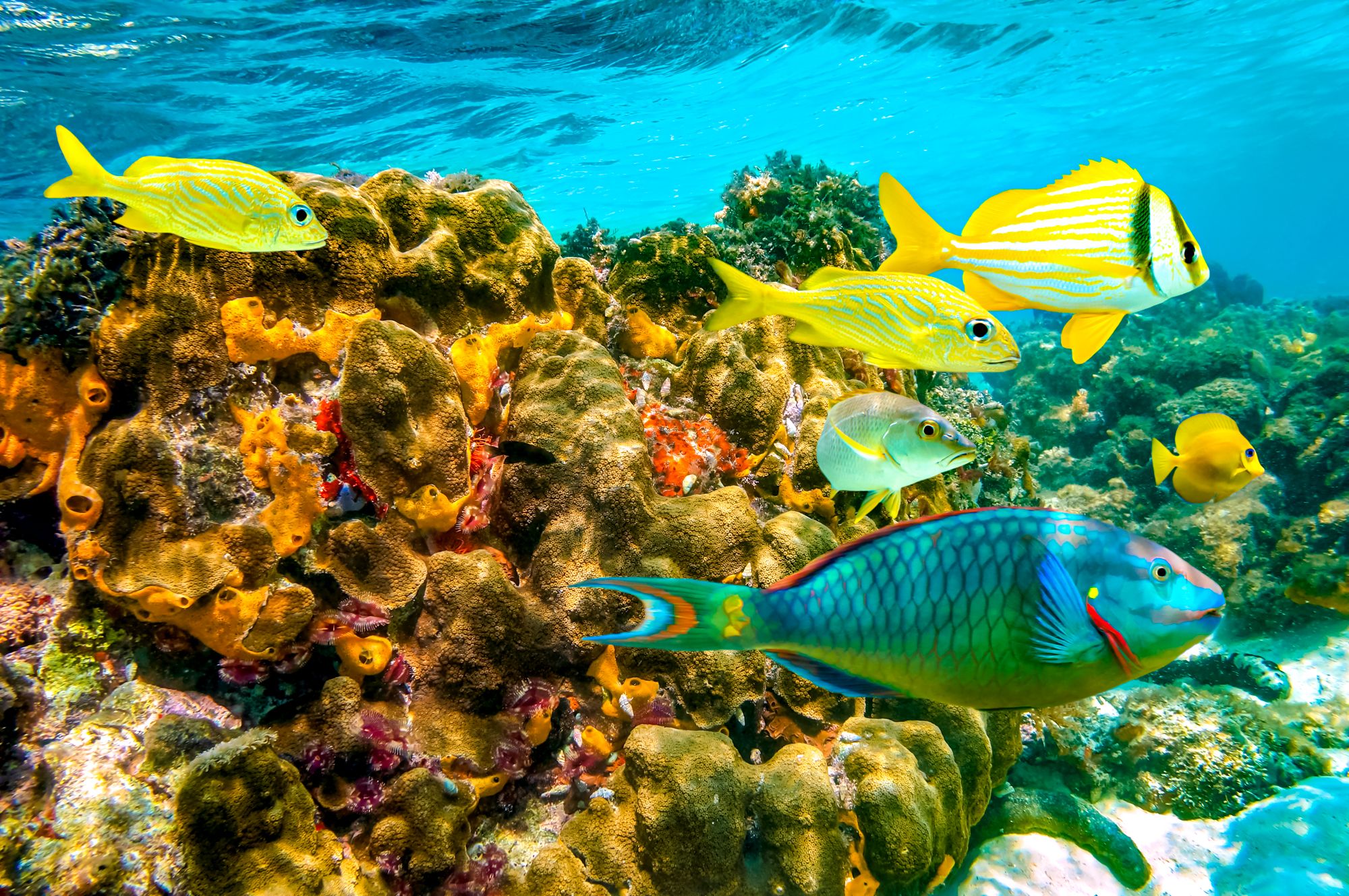
While you’re swimming around exploring the ocean’s depths, you may also spot nurse sharks, West Indian manatees, as well as bluehead wrasse. Some people have even reported spotting larger sharks and whales during migration season in some areas. Whether you go for a shallow dive, or something with a little more depth, there’s lots to experience beneath the waves in Jamaica.
Beware of things like fire coral, which will irritate your skin and affect your dive in a negative way if it touches your skin. Other than that, the creatures you’re likely to see around the island, at popular dive sites, are generally harmless.
Below you’ll find our list of the most popular dive sites in Jamaica!
14 popular dive sites in Jamaica you’ll want to explore
The Throne Room
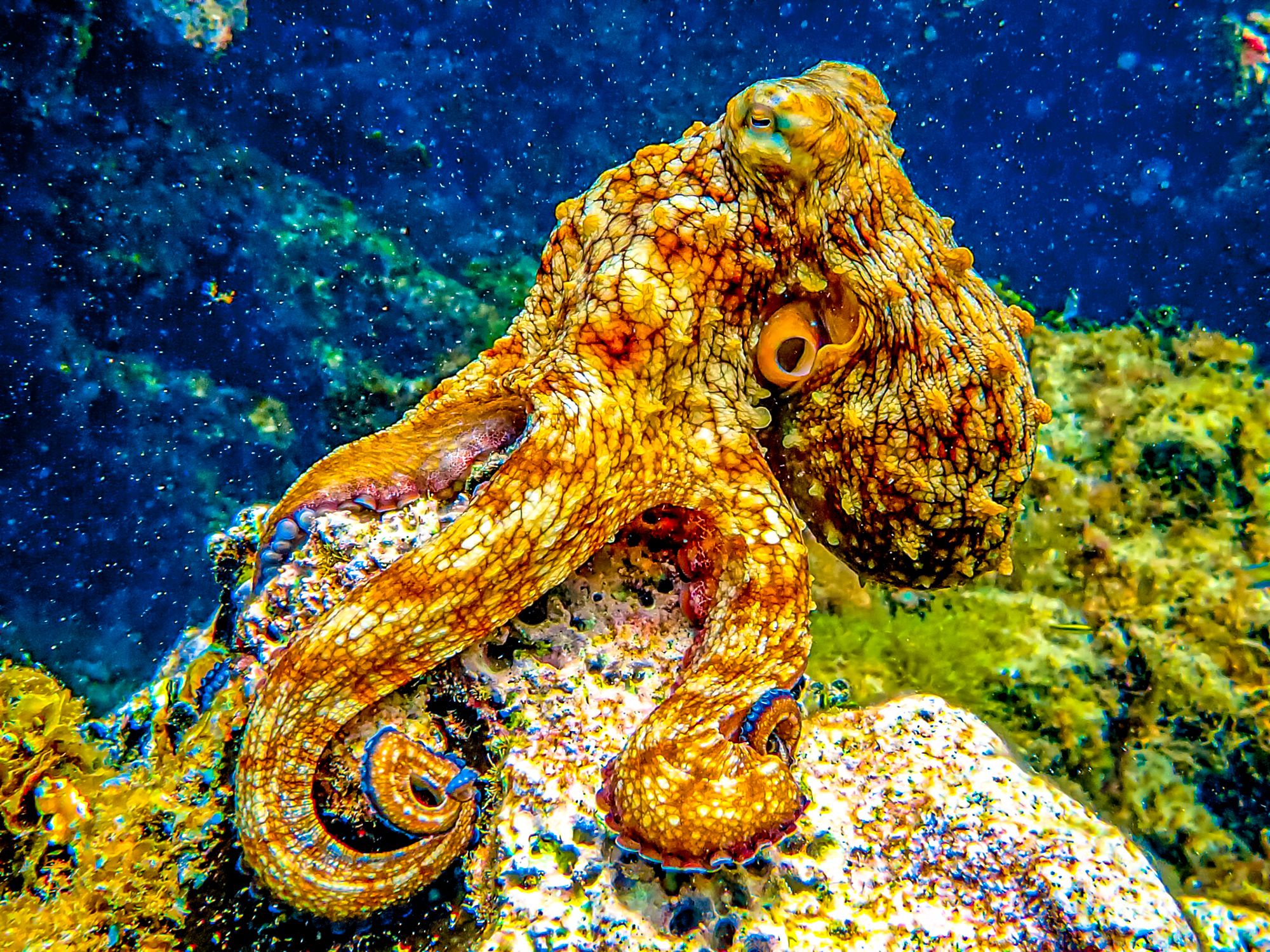
Accessible from: Beaches Negril / Sandals Negril
Dive level: Novice
The Throne Room in Negril is often described as the best site for scuba diving in Jamaica. It is highly rated because of the abundance of marine life that can be found there, as well as the unusual coral formations. During a dive here you may come across stingrays, black corals, eels, octopus, barracuda, yellow sponges, marine coral, snappers and sometimes dolphins and nurse sharks. This reef gets its name from the throne-shaped elephant ear sponge which can be seen here. Many divers are fascinated by the lighting once they get into the underwater cavern, just about 60 feet below the surface. The notable contrast here, between light and dark, is truly majestic.
Frenchman Hole
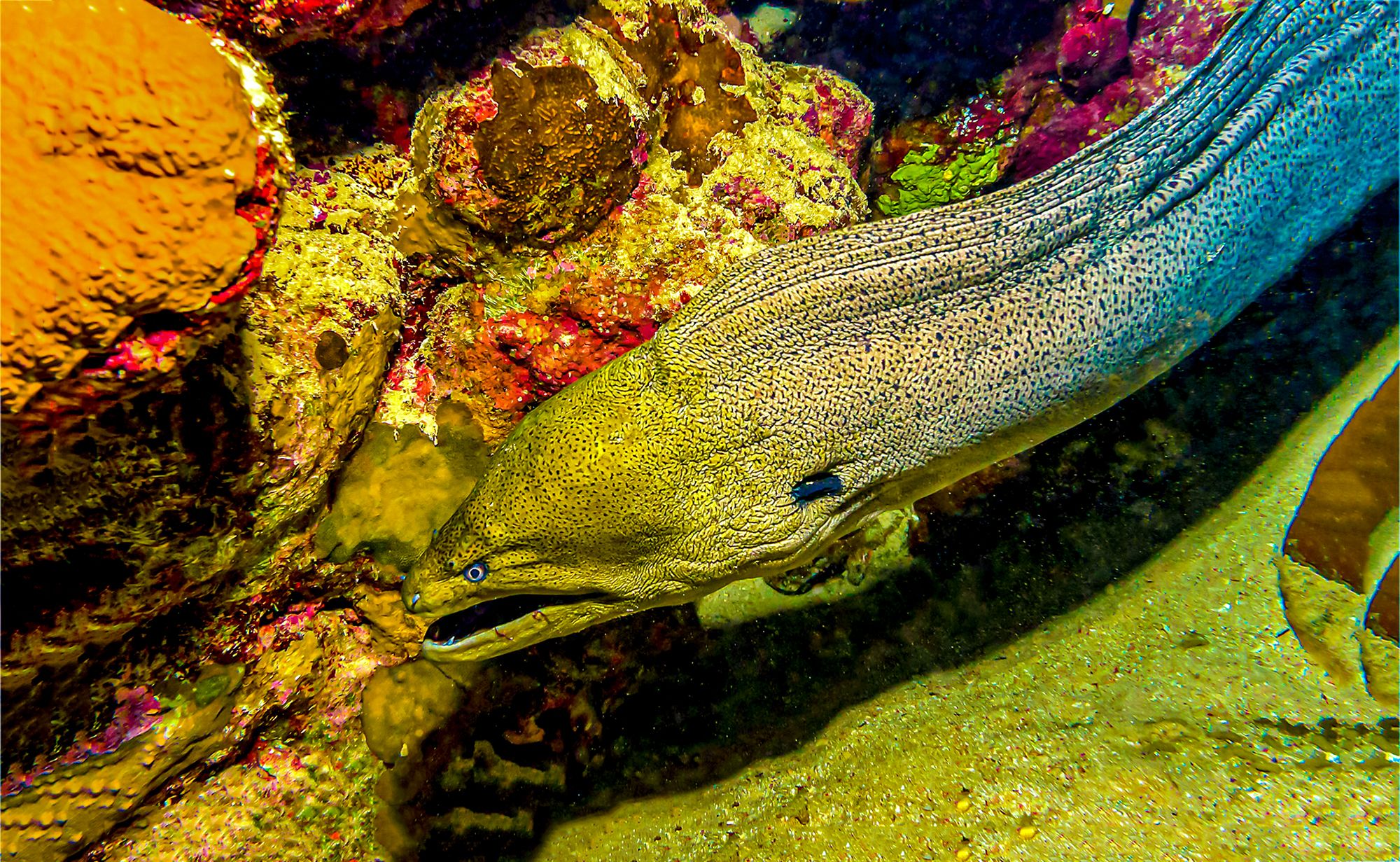
Accessible from: Beaches Negril / Sandals Negril
Dive level: Advanced
In terms of the corals found at each site, Frenchman Hole is similar to the Throne Room. Frenchman Hole is also a dive site where you can sometimes spot moray eels, groupers, nurse sharks and hammerhead sharks. It’s not as popular as some of the other dive sites on the island, but it can be found near Orange River, and features a significant number of ledges along a sloping wall. This dive spot is not far off from the beach, and the cave here is easily accessible with a wide opening. The cavern starts at around 30 ft, and ends at 70 ft.
Widowmaker's Cave
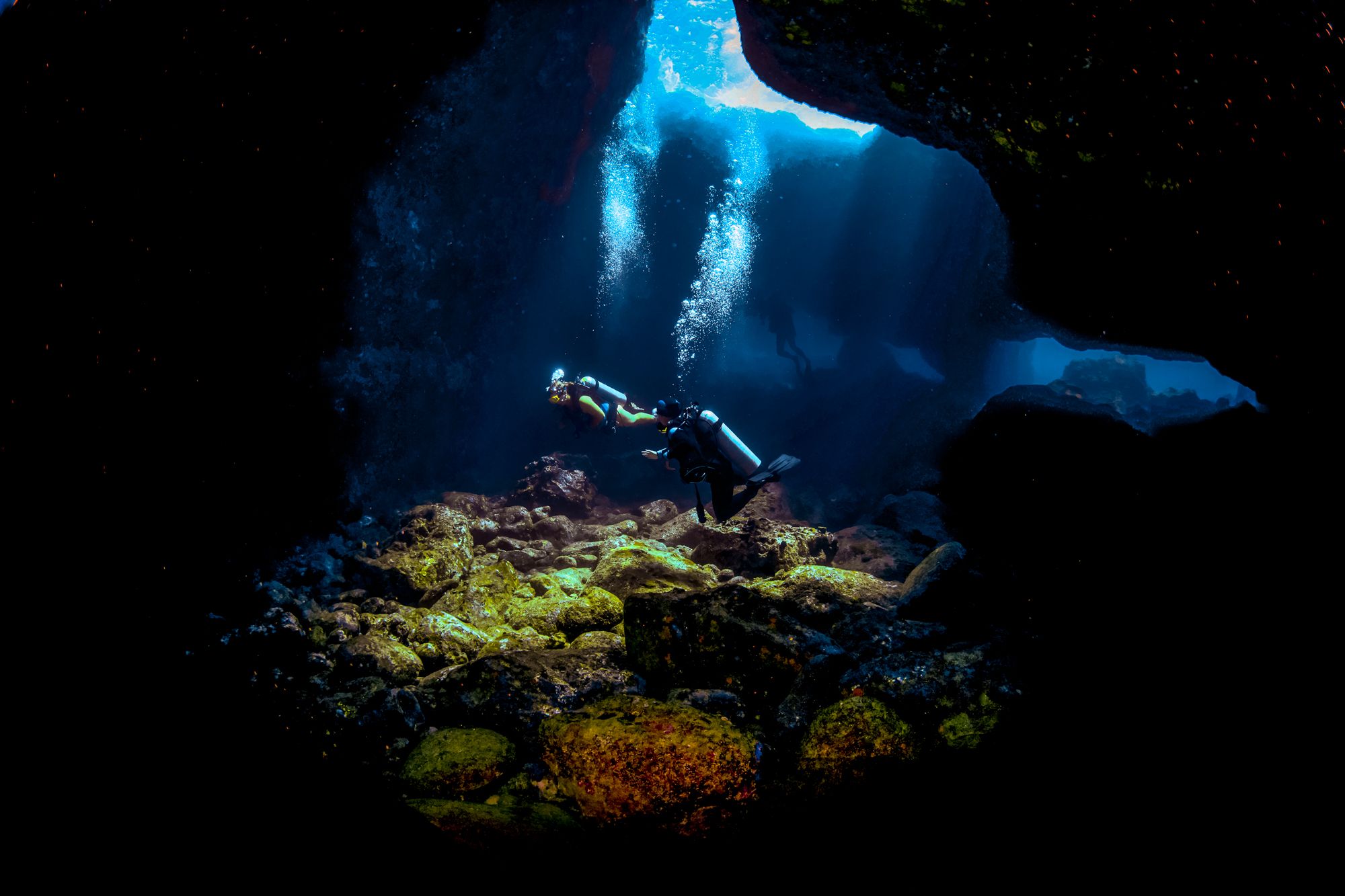
Accessible from: Sandals Montego Bay / Sandals Royal Caribbean
Dive level: Advanced
The Widowmaker's Cave is the most famous site for scuba diving in Montego Bay. Divers have the option of starting this dive from two different areas – from the top (via an opening in the reef at 35 ft), or from the bottom near the 80 ft mark. Whether you start from the bottom and make your way to the top, or from the top and make your way down, you’ll be able to see the same unique sights along the way. Different challenges are in store depending on the route you take, but there are safety stops along the way. On this dive you can see things like black corals which cover the walls, various soft corals, parrot fish, barracuda and more.
SS Kathryn Wreck (The Catherine/Kathryn Caverns)
Accessible from: Beaches Ochi / Sandals Ochi / Sandals Royal Plantation
Dive level: Advanced
The SS Kathryn Wreck is a great scuba diving site, just off the coast of Ocho Rios in Jamaica. The SS Kathryn was a 120 ft WWII mine-sweeper, and it was intentionally sunk in the 1950s for the purpose of creating an artificial reef. It has thrived over the years, and today you can find corals, sponges, and marine life of all kinds during a dive here. You can either swim around the wreck, or venture inside the wheelhouse for a closer look. This dive isn’t really for beginners, though it is incredibly popular. While diving here you may come across sting rays, sergeant majors, lobsters, eels, sea snakes, hamlets, snappers, and sometimes nurse sharks. There are also lots of barrel sponges and sea fans.
The Arches
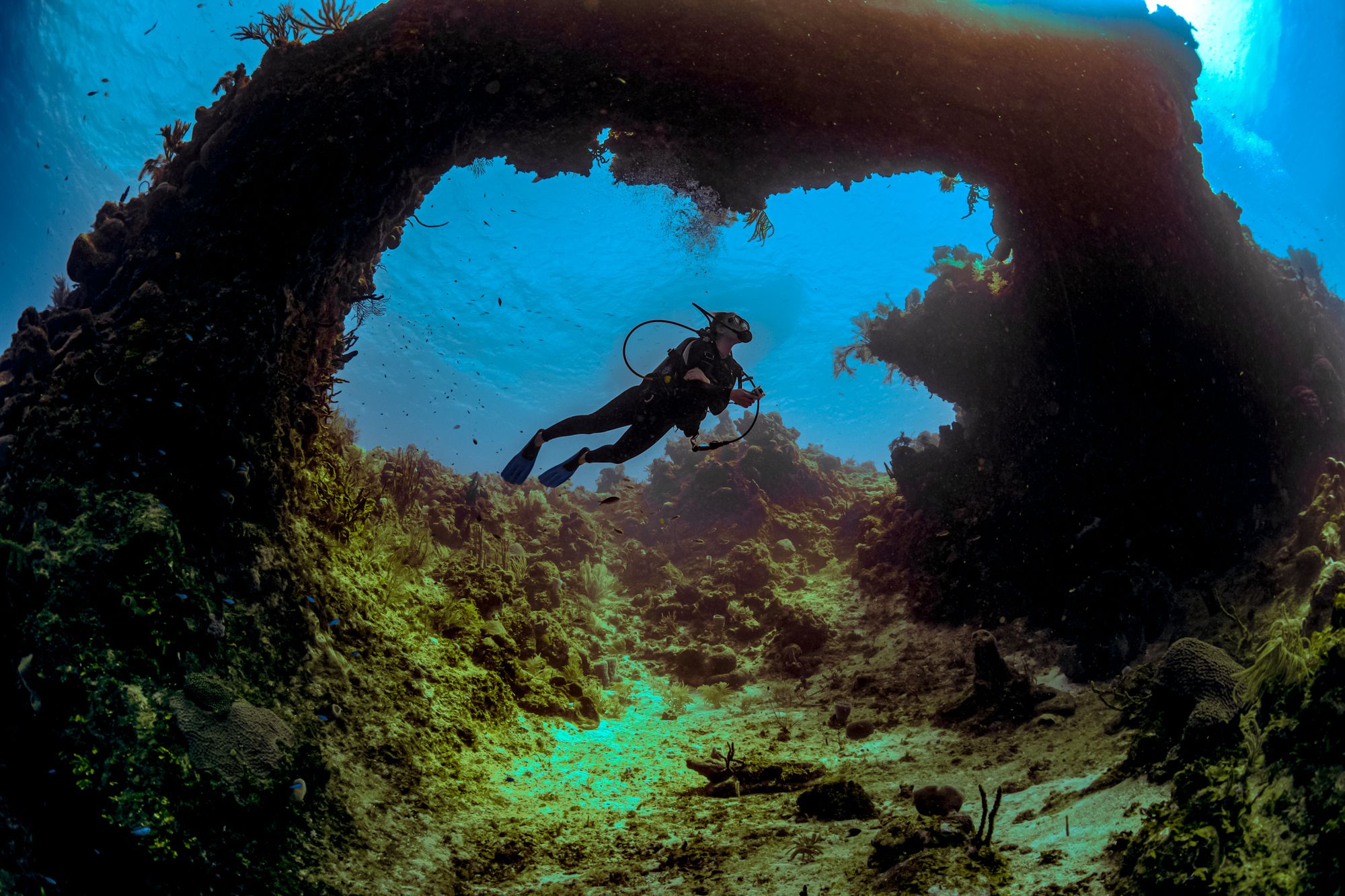
Accessible from: Sandals Montego Bay / Sandals Royal Caribbean
Dive level: Advanced
The Arches and the Caves are incredible diving sites that feature outstanding rock structures; divers in these areas can sometimes see things like rays and sharks. The Caves are about 10 minutes away from shore and consist of two caverns connected by a narrow tunnel. The Arches ranges from 40 ft to 60 ft, with a noticeable drop-off at the 40 ft mark. You’ll easily be able to swim through The Arch here right alongside schools of purple and yellow fairy basslets. Advanced divers can take advantage of wall explorations with many ledges and overhangs.
Surprise Reef
Accessible from: Beaches Negril / Sandal Negril
Dive level: Novice
Perhaps your kids have always wanted to try scuba diving, but you’re not sure where the best place is to start in Jamaica. The minimum age for PADI® certification is 10 years in most places, and once your kids have their certification, they can dive in areas that are kid-friendly. Surprise Reef is one of those dive sites in Jamaica which is good for beginners. The average depth of this reef is 30 feet, and as the name suggests, it is filled with opportunities to spot all kinds of marine life including turtles and parrot fish.
The Wreck
Accessible from: Sandals Montego Bay / Sandals Royal Caribbean
Dive level: Advanced
Diving with the objective of seeing exotic marine life and diving in the hopes of finding wrecks are two different adventures entirely. You won’t find wrecks at every single dive site, or even an abundance of fishes. At The Wreck, however, the main attraction is a plane wreck, about 60 ft down. The fuselage of the plane is at the 80 ft mark at this location, right next to stunning coral, and with fishes like black durgon swimming nearby. This is a dive for the savvier divers, who’ll likely want to take full advantage of the chance to explore the wreck.
Stingray City
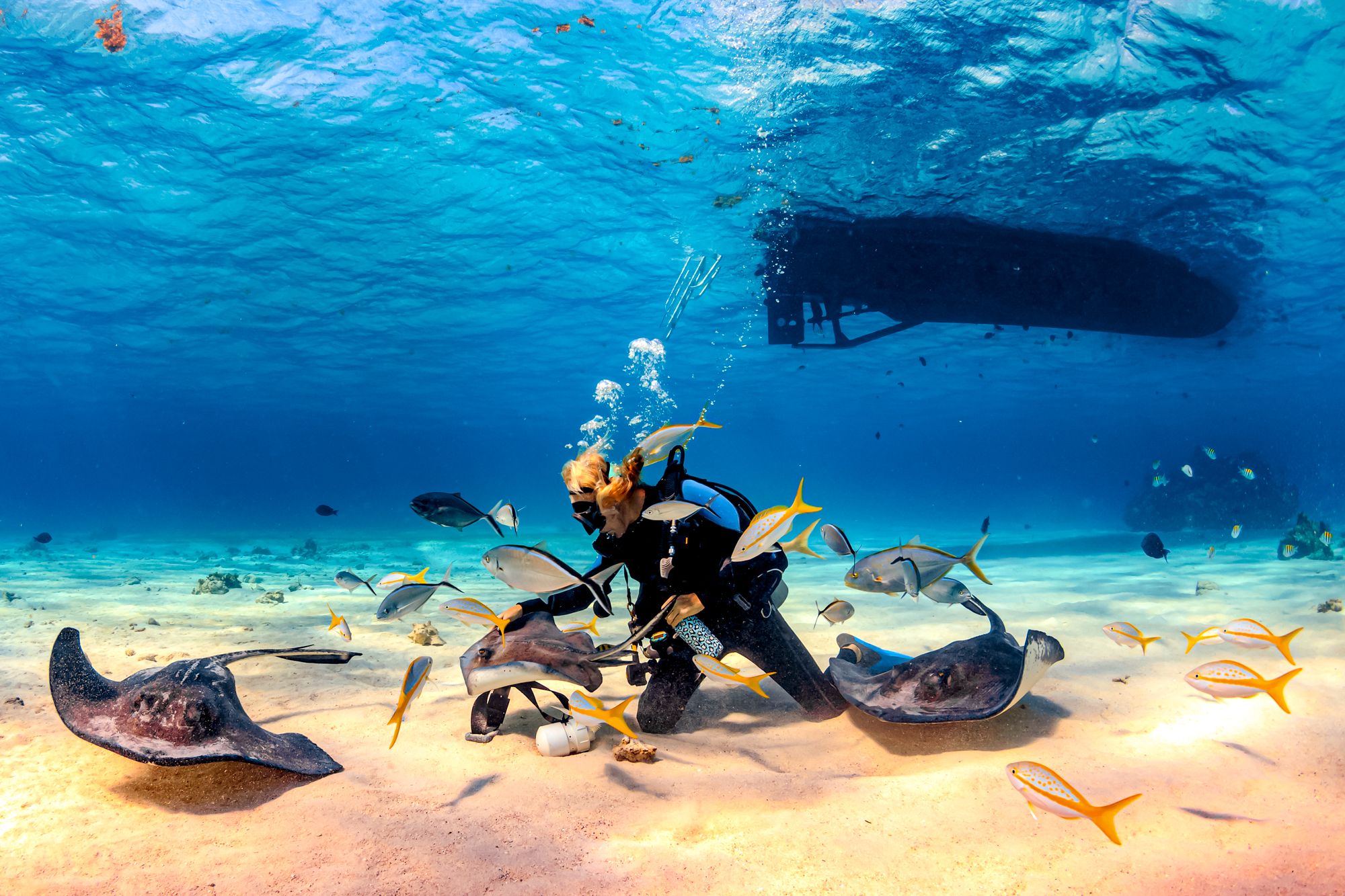
Accessible from: Sandals Montego Bay / Sandals Royal Caribbean
Dive Level: Novice
Stingray City is one of those attractions that should be at the top of your list of things to do while in Jamaica. As the name suggests, during this dive you’ll have lots of opportunities to see rays up close. There are multiple reefs within the bay in this area, and the reefs here are among the healthiest and most attractive in Jamaica. Don’t be afraid if the sting rays come right up to you, or swim near your legs out of curiosity as they’re quite accustomed to having visitors. With the help of a guide, you may even get to touch and hold the stingrays above the water if you so choose, but keep in mind they’re a lot bigger than you would expect!
Middle Shoal Reef
Accessible from: Beaches Ocho Rios / Sandals Ochi / Sandals Royal Plantation / Beaches Negril / Sandals Negril
Dive Level: Novice - Master
You’ll find a little bit of everything at Middle Shoal Reef. This reef is often used for the PADI® introductory (Resort) Scuba Course dive number 1. There are two sides to this reef, which cater to divers of varying skill levels. Guests of Sandals Negril can access the more advanced section of this dive with a depth of 90 ft. Sightings include spade fish, turtles, French grunts, squirrel fish, barracuda, and much more. There’s also a small-engine plane wreck at this site. If you dive further out, you’ll encounter a drop-off up to 200 feet. The area suitable for beginners has a depth of 30 feet. During this dive you’re likely to see anything from lobsters and starfish, to scorpion fish and stingrays. There’s also plenty of barrel sponges and sea fans around the reef.
Devil’s Reef
Accessible from: Sandals Ochi / Sandals Royal Plantation
Dive Level: Master
You can take a boat ride from Ocho Rios to get to the protected area where Devil’s Reef can be found. Here you’ll find an underwater ridge with prominent staghorn corals and black-ball sponges. During this dive you’ll navigate a gently sloping area until around 65 ft, and then experience a steep drop-off over sandy bottom at 130 ft. There are all different kinds of reef fish swimming around, and you’ll also see things like lettuce sea slugs, vibrant corals, turtles, and maybe even moray eels or nurse sharks.
English Reef
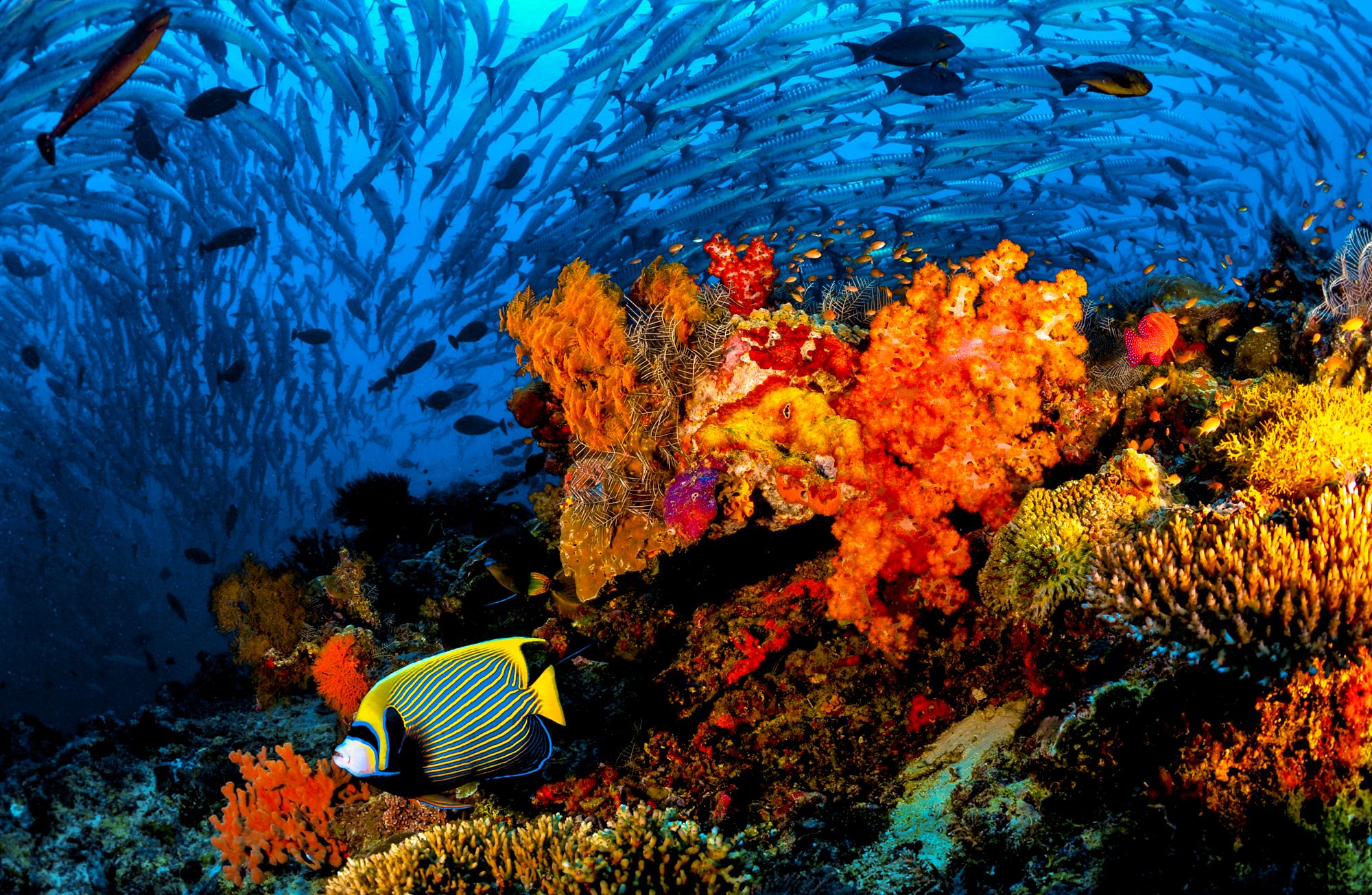
Accessible from: Sandals South Coast
Dive Level: Advanced
English Reef is a lesser known diving site in Jamaica, which is popular with more experienced divers. This extensive reef spans along depths of 65ft up to 100ft, and it is perfect for those who want to dive a little deeper. Most describe English Reef simply as “stunning” or “breathtaking”, and you’ll appreciate the great visibility (up to 80-ft) when conditions are most optimal.
Maize Reef
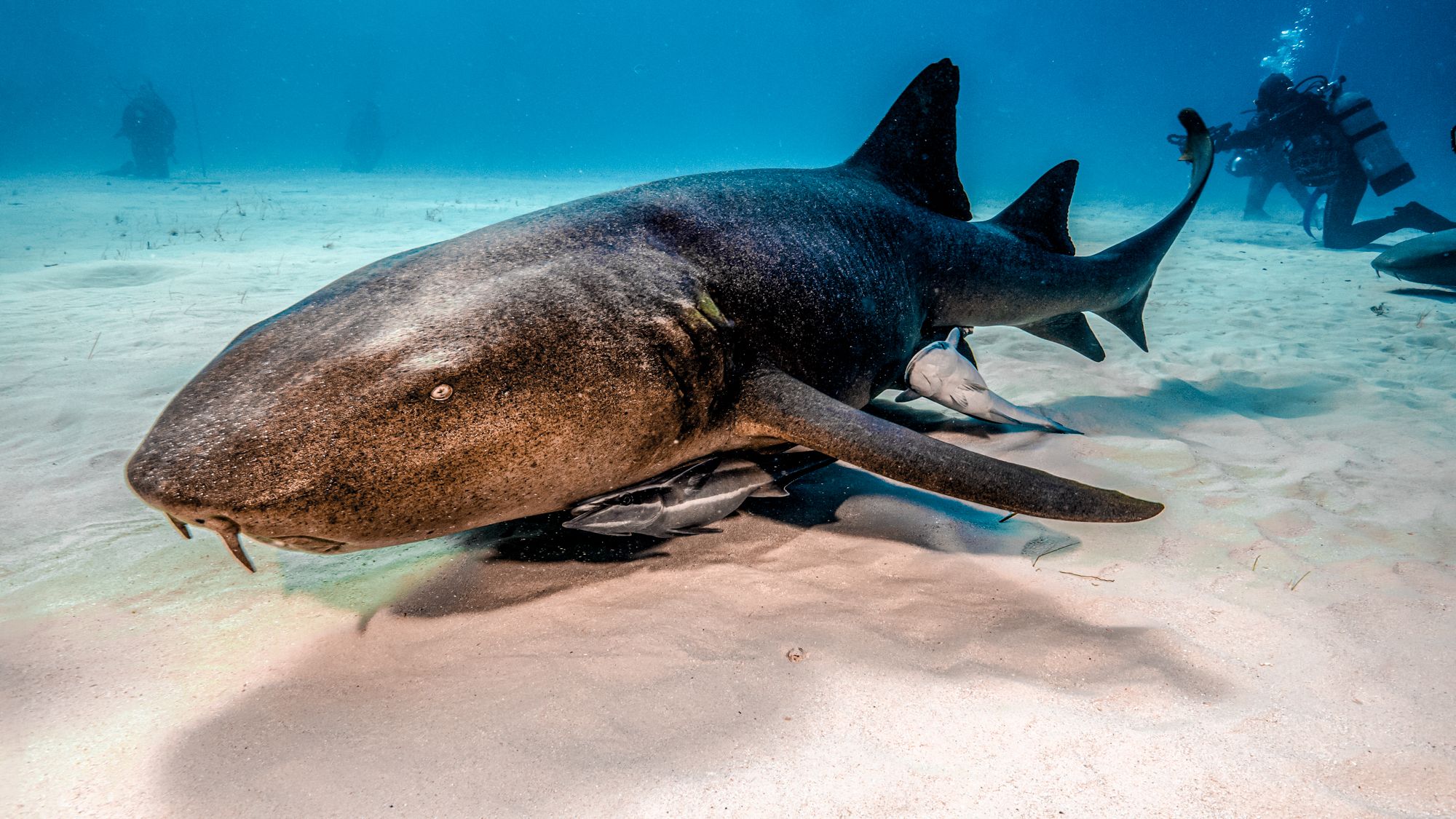
Accessible from: Sandals South Coast
Dive Level: Novice
Jamaica is a great place to learn to scuba dive, mainly because there are many reefs you can explore which aren’t excessively deep. Maize reef is one of these. This reef is fascinating because of the way divers can navigate in and out, and even around the reef for a wider perspective. This is where its name comes from. While Maize is most suitable for divers who are just starting out, more advanced divers will still appreciate this setting.
The Sunken City of Port Royal
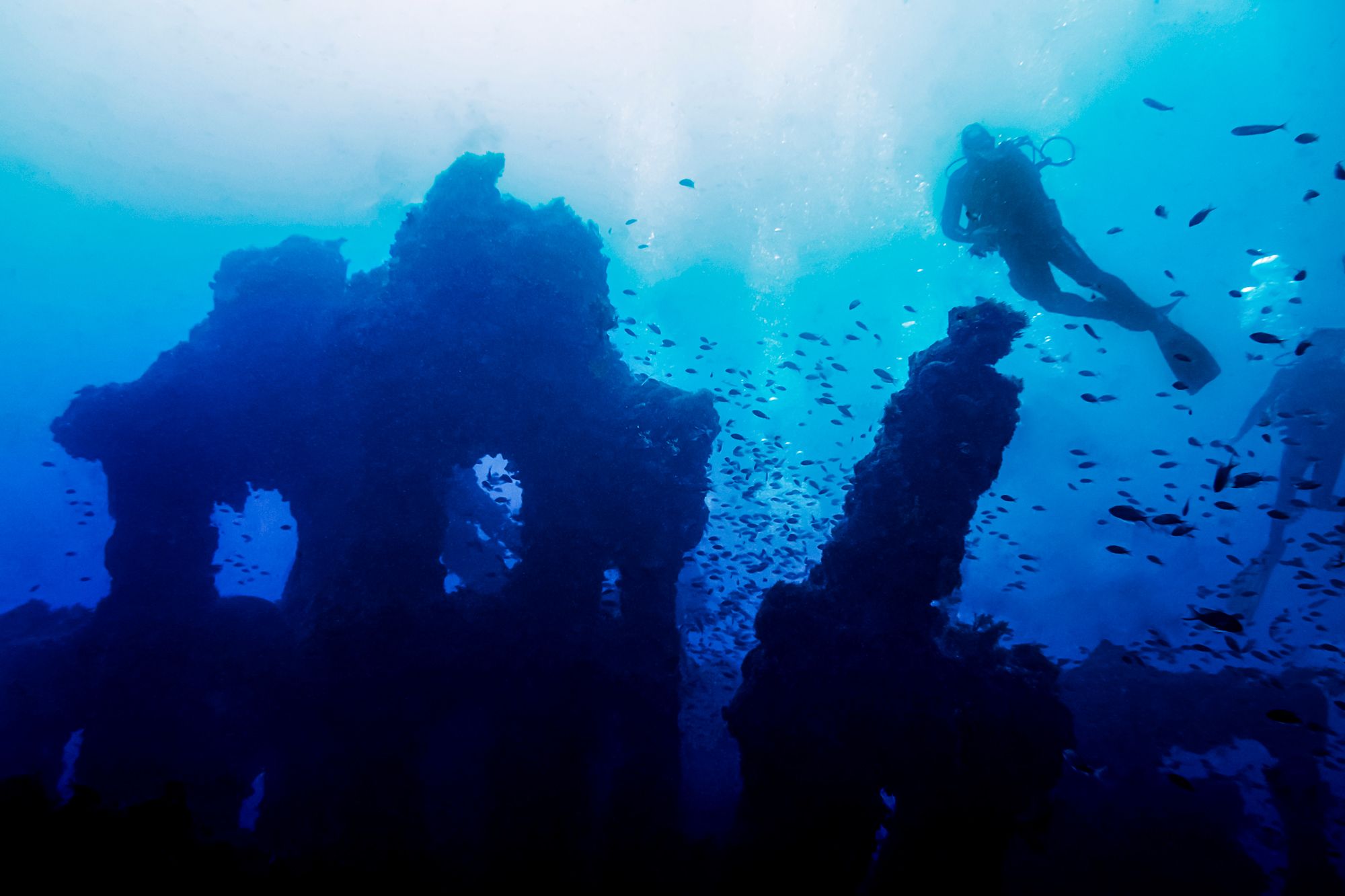
Dive Level: Advanced
Port Royal in Jamaica has quite a rich history. It was once considered the wickedest city in the world and was at one point run by pirates. Part of the colorful history of Port Royal involves an earthquake that caused two thirds of the city to sink into the sea in 1692. Today, the site off the coast of Kingston can be explored with a dive session; you’ll need special permission to dive in this zone though. If you sign up with a licensed diving company, you don’t have to worry about anything but simply arriving and getting ready for an outstanding diving experience. There are several shallow shipwrecks beneath the waters here, and plenty of reefs with lots to see.
Alligator Reef
Dive Level: Various
The appeal of Alligator Reef is that it consists of multiple reefs in one. There are five distinct dive sites (sections) that are part of Alligator Reef, and they appeal to divers of different skill levels. Each section of this extensive reef comes with its own challenges and sightings vary, but the unexpected nature of what you can see here (everything from stunning coral to tropical fishes) is what keeps divers coming back for more.
Expert Tip: The earlier you get out for your dive the better. Scuba dive trips from Beaches and Sandals Resorts often leave early in the morning. Book your dives on arrival, to make sure there’s availability.
When to go Scuba diving in Jamaica
Like most Caribbean islands, the weather in Jamaica is consistently lovely. This means you can travel to the island at just about any time of year and find near perfect (if not perfect) weather. Day temperature is usually between 82°F when it’s ‘winter’ (December until March being the coolest and driest months) and 91°F in the summer (June until October being the warmest and wettest months).
Jamaica also has some great beaches which are ideal for scuba diving. Not only are the beaches picturesque and postcard worthy, beneath the waves you’ll find visibility of around 70 - 100 ft. On some days, visibility exceeds 100 ft, and this happens usually in the best weather conditions. The water temperature in Jamaica is between 81 - 84°F year round, which means a 3 mm wetsuit will do for divers.
Also read: 28 Helpful Travel Tips For Jamaica: Dos & Don’ts.
Dive for free with Beaches / Sandals in Jamaica
Beaches and Sandals Resorts in Jamaica offer free scuba diving trips for certified divers, during their entire stay (max. two tanks a day). This includes professional equipment and staff. Some guests prefer to bring their own wetsuits, which can be stored in one of the lockers at the dive shop in between dives. However, you can get one at the dive shop as well - at no additional costs.
Both Beaches and Sandals make it possible to personalize your dive schedule, which means you won’t be obligated to wake up before the sun comes up to head out on a dive, if you don’t want to. It might be worth it to go diving in the morning though, especially if you want to go to some of the more far off sites.
If you’re not PADI® certified already, you’ll be able to save money getting certified at Beaches or Sandals, as this process tends to be less costly at the resorts than in other places.
Beaches has all-inclusive family resorts in both Negril and Ocho Rios (Beaches Negril and Beaches Ocho Rios). Sandals all-inclusive adults-only resorts can be found in Montego Bay, Negril, Ocho Rios and along the south coast of Jamaica.
Now that you know more about scuba diving in Jamaica…
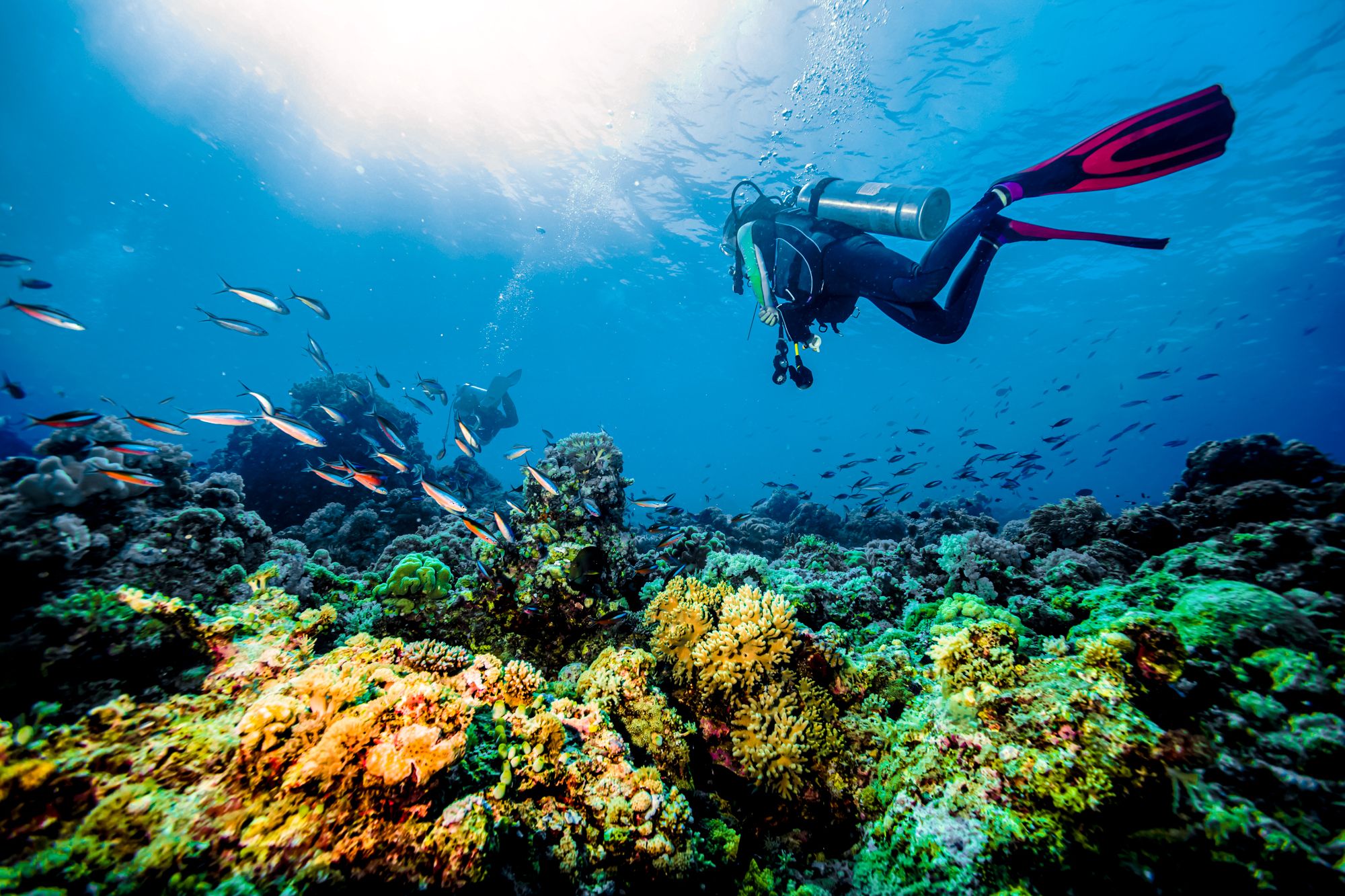
The next thing to do ahead of your trip is to pack! Our best packing tip for Jamaica? Don’t overthink it. Pack light, but make sure you include the things you’ll want to have for your scuba expeditions, and other warm weather essentials. Once you’ve taken this final step, you and the entire family will be more than ready for an unforgettable vacation in Jamaica!
Bonus: Alternatives to Scuba diving in Jamaica
While scuba diving is a must if you want to explore the undersea world properly, there are some other options that are more family friendly (in case you are bringing younger kids).
Snuba diving in Jamaica
If you, the kids or your partner aren’t certified for scuba, you can try SNUBA diving in Jamaica, which does not require certification. SNUBA is a fun combination between scuba diving and snorkeling. During your SNUBA dive you’ll be able to stay scope the underwater scene much longer than you would while snorkeling as you’ll be breathing through a regulator connected to a floating air supply. You can go as deep as 20 ft down during the experience, which can also be enjoyed from more shallow depths. The best part about SNUBA is that you’ll get to move around without a cumbersome tank. Ahead of your SNUBA trial, read Sandals’ Ultimate Guide to SNUBA Diving post.
Snorkeling in Jamaica
If you’re interested in snorkeling in Jamaica, it’s a good idea to bring along a full face mask, especially if you’re travelling with younger kids. Snorkeling affords you a chance to get better acquainted with marine life, without the need for certification or training sessions. Most people get the hang of it right away, but if you haven’t tried snorkeling before you can check out Sandals’ snorkeling tips for beginners and the best snorkeling in Jamaica..
Frequently asked questions about scuba diving in Jamaica
Is scuba diving hard?
Unless you’re not so comfortable being underwater, scuba diving is relatively easy! It is recommended that you are in good physical health and a fairly confident swimmer before you dive. First time dives can be daunting for many, but trying to breathe naturally and not panicking are key. We recommend diving with PADI certified instructors, who will be on hand to help you at all times.
Are there sharks in Jamaica?
Tiger, hammerhead, Caribbean reef, nurse and bull sharks can all be found in Jamaica’s warm waters - but don’t worry. These sharks are not aggressive and are unlikely to attack unless provoked. The beautiful reefs surrounding the island act as a natural barrier to sharks, so you’re unlikely to see them during your visit. Shark attacks are incredibly rare in Jamaica and, when they have occurred in the past, have been in deep water far away from the safety of the reef.

